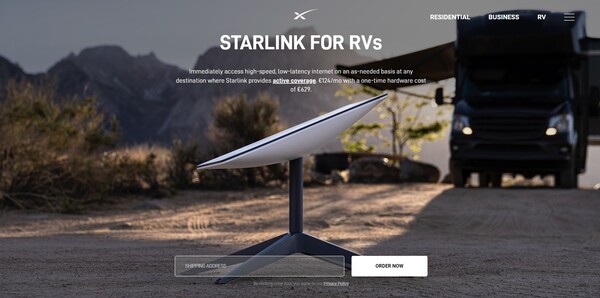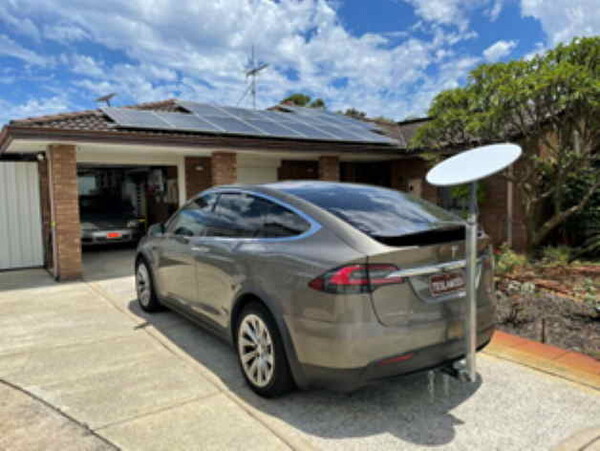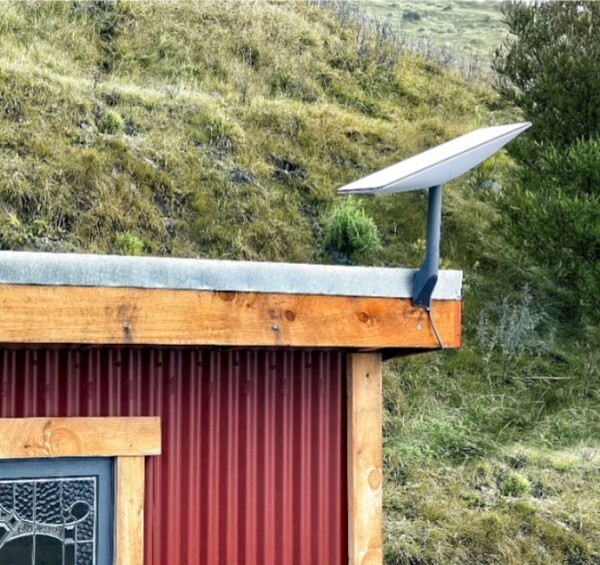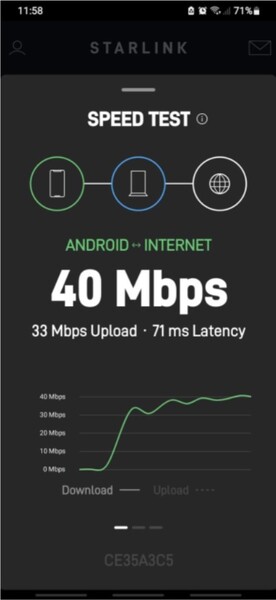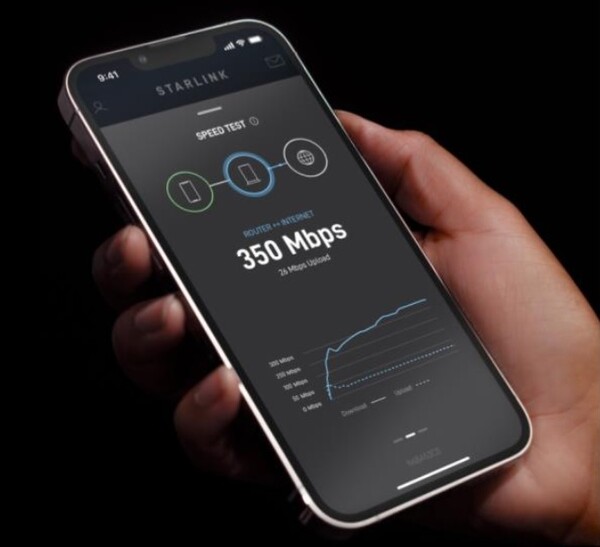Starlink has robust cyber-security as recent events have clearly demonstrated and although some challenges may lie ahead, this new Musk enterprise is again exciting and inspiring.
The addition of the portable/RV market may prove to be a massive game changer in high income countries. Starlink is now available in 32 countries and is expanding rapidly across the planet. Starlink serves over 400,000 subscribers globally, up from 250,000 just a few months ago. Although most current users are based in North America and Europe, its first foray into the massive Southeast Asian market will see it up and running in the Philippines by the fourth quarter of this year.
People ordering from areas marked “available” on the map will have their Starlink shipped immediately. It is not yet clear whether this improvement in product availability will include the supply of a vital accessory for some users, the proprietary Ethernet adapter that plugs into the supplied router. Accessories, their performance, usefulness, pricing and availability are a whole different topic. After a price increase in March, Starlink orders now cost US$599 upfront with a monthly service charge of US$110 to receive the satellite broadband service. Portability adds US$25 to monthly charges. The newest portable service, Starlink for RVs, provides the ability to pause and un-pause service at any time and is billed in one-month increments, allowing users to customize their service to their individual travel needs.
Starlink RV enables users to temporarily move their Starlink to new locations to receive service anywhere within the same continent with active Starlink coverage. Portable/RV users are served on a best effort basis and can expect lower service levels than fixed users, particularly in areas marked as "Waitlist" on the availability map. Starlink does not support in-motion use at the moment. Starlink is actively working to make it possible to use the service on moving vehicles and boats. It has recently also received testing authorization from the Federal Communications Commission (FCC) to test its terminals not only on aircraft but potentially on helicopters as well. Starlink has already started to provide in-flight connectivity through commercial airlines.
Urbanites who are used to fast broadband can now load their RV with a “dishy” (a common term of endearment for the Starlink antenna dish) and set off for the last frontier. That’s cute, but Starlink is also a potential game changer for millions in rural communities across the planet. These are people that are frustrated by data caps, long-term contracts, expensive mobile roaming solutions, SIM card swaps and very slow or no reliable internet connection. As we have seen recently, Starlink enables whole communities to gain access to education, health services and communications support.
Of course, Starlink is not the only broadband satellite service provider out there. There are dozens of others and various articles and reports published in the US and Europe shed selective light on their various services. Some of the technical performance aspects of this relatively new technology are complex. Reliable, pertinent verifiable data can be tricky to come by. We could start by looking at “Striking a Balance between Bufferbloat and TCP Queue Oscillation in Satellite Input Buffers”. Satellite broadband is indeed a broad and nascent topic that warrants careful study as not all may be as it seems.
In the meantime, I have satisfied myself that Starlink lives up to its reputation of providing a reliable and fast broadband service at a competitive price. As an erstwhile globetrotting semi-geek who was for a time welded to pre-smartphone world wide web services, I understand unreliable slow internet, believe me. Sometimes it would take several interrupted overnight attempts to transfer say 10 MB of zipped software install files over a dial-up line from a PC server in New Zealand to hospitals in the UK. The haunting noise of the dial-up connect sequence is difficult to forget.
The seamless merging of communications equipment and computer technology that was widely heralded in the 1980s is no more evident than in Starlink. But my overriding motivation to purchase Starlink was to quickly improve efficiency and effectiveness of my use of the internet as a translator for Notebookcheck. Slow, unreliable mobile internet and extortionist fees to avoid data caps had plagued me since moving to my new rural retreat. In short, I am now a very happy new owner of a ‘dishy’.
Once your Starlink arrives in the mail you can be up and running quickly, literally within minutes. A feature of the Starlink solution are the one-page setup diagrams and the absence of manuals. That is, for the most part because there is not much to do other than plug in cables.
The Starlink Kit arrives with everything you need to get online, including your Starlink, Wi-Fi router, cables and a base, which is ideal for ground level installation or a quick setup to test your connection. Since Starlink requires a clear view of the sky to connect with the satellite network, many customers use a permanent mount above ground level. Objects that obstruct the connection between your Starlink and the satellite, such as a tree branch, pole, or roof, will cause service interruptions.
Before you power up, you can download the Starlink App (iOS or Android) from the website to determine your best install location. The standard 75 ft (23 m) cable supplied to connect the ‘dishy’ to the router is plain stranded STP CAT5e, suitable for outdoor use. The router acts as a 48 V, 2 A PoE power supply. For my installation, the 150 ft (46 m) cable sold as an accessory was still not long enough and I ran a length of CAT5e cable from the office to the router’s proprietary Ethernet adapter. The router is in one of the nearby sheds about 100 m from the office and my ‘dishy’ sits solidly on top.
Both the format and clarity of the information Starlink provides on its website are excellent, if somewhat concise in places: “Using advanced satellites in a low orbit, Starlink enables video calls, online gaming, streaming, and other high data rate activities that historically have not been possible with satellite internet. Users can expect to see download speeds between 100 Mb/s and 200 Mb/s and latency as low as 20 ms in most locations.”
That, of course, applies to hard-wired devices that are connected via the Ethernet adapter accessory. Smartphone download speeds over Wi-Fi are slower than that and, in my case, latency is relatively high. In a recent random test run using the Starlink app Speed Test, Android to internet download speed clocked in at an average 40 Mbps while router to internet and Android to router download speeds were 152 Mbps and 55 Mbps, respectively. The Starlink speed test is a leading-edge app measuring complex, highly volatile data and as such warrants more in-depth scrutiny – perhaps another time.
A permanent mount in an elevated location, like a roof, pole, or wall, may provide the best installation and service. Additional mounts and cable routing accessories are available for purchase on the Starlink Shop and elsewhere. Then, of course, there’s Starlink Business. With more than double the antenna capability of Starlink, the Starlink Business package comes with a higher gain antenna, additional throughput allocation, and better extreme weather performance. Starlink Business helps ensure bandwidth for critical operations 24/7. Starlink Business customers will benefit from 24/7, prioritized support and a publicly routable IPv4 address. Starlink Business users can expect download speeds of 150-500 Mbps and latency of 20-40 ms, enabling high throughput connectivity for offices of up to 20 users, storefronts, and demanding workloads across the globe. With Starlink, there are no long-term contracts, no data caps, and no exclusivity requirements.
But there are some clouds on the horizon as well. Recent media reports highlight the apparent threat China perceives in Starlink. The underlying tone is bellicose as these article headlines indicate: China vs. Elon Musk: Scientists Develop Plan to Destroy Starlink Satellites, China planning to develop weapons to destroy Elon Musk's Starlink, China might be developing weapons to shoot down Elon Musk's Starlink satellites - to prevent their potential to greatly enhance US military power.
As with most exciting new technologies that threaten the establishment, Starlink has its competitors and sceptics. As WCCFtech reports that Viasat is trying to place Starlink under a lengthy FCC review. There is some contention around light pollution and space debris. Some of the data being used to support the case are back-of-envelope calculations and SpaceX appears to be in a strong position to defend its long-term growth plans. Watch this space.
To round off the picture of Starlink’s comprehensive range of potential users globally, the unpleasant situation that has been unravelling in Ukraine provides ample explanation. At a recent Senate hearing in the US, Gen. David Thompson, vice chief of space operations of the U.S. Space Force, reported that one lesson that could be drawn from the war in Ukraine about the role of commercial satellites in armed conflicts was the resiliency provided by large, proliferated constellations. The same article on Spacenews reported that Russia in a cyberattack in February managed to disrupt satcom services provided by a Viasat satellite. But SpaceX’s broadband constellation Starlink has continued to provide internet services in Ukraine despite attempts to disrupt it. According to Elon Musk, the Starlink network “has resisted Russian cyberwar jamming and hacking attempts so far, but they’re ramping up their efforts.”





